
Lexington’s African American Heritage Walking Tour

Join us for an on-demand walking tour of Downtown Lexington’s African American heritage sites.

Join us for an on-demand walking tour of Downtown Lexington’s African American heritage sites.

Explore topics related to Science, Technology, Engineering, Art, and Math (STEAM) in this space for youth, grades 3-12.

Learn how the Lexington Public Library Foundation empowers change within our library system.

Learn or develop a personal or professional skill with LinkedIn Learning classes, available for free with your library card.

Did you know physical materials renew automatically if they don’t have a waiting list? Check your account online to see the status of your items.

The Central Library's Parking Garage is available to our customers or anyone needing a parking space. There are 428 parking spots in the garage, 10 of which are handicapped or van accessible. The height clearance for garage entry is 13'1". The height clearance for parking access is 6'4".
Two hours of free parking is provided with a ticket validated inside the Central Library.
Meet with a librarian for one-on-one consultation. Please submit the Book a Librarian Appointment Request Form or call 859-231-5500 during business hours to schedule an appointment. Appointments are scheduled Monday-Friday during Library business hours and typically last 30 to 45 minutes.
All Lexington Public Library locations are closed on these holidays.
Find out what's happening at our locations. Browse upcoming events and discover our dedicated learning spaces. Reserve a meeting room. Explore our galleries and special collections.
The materials in these collections are physically housed in the Kentucky Room at the Central Library and can be viewed during the Central Library's open hours.
For more information about a specific item, including any copyright restrictions on that item, please click on the information button:
Accessibility information for each of our locations, including parking, elevators, and restrooms.
Thanks for your interest in joining the Lexington Public Library! Your library card is the key to checking out books, downloading audiobooks, taking online classes, and much more. Please check here to find out if you qualify for a library card and how to apply.
Library meeting rooms are available for individuals, non-profit, for profit, study groups, and community organizations seeking to hold meetings, trainings, and workshops. Meeting rooms are free of charge. Sterno and other tools/equipment that have an open flame are prohibited.
The Lexington Public Library welcomes your time and talents! There are a number of volunteer opportunities available. Apply now.
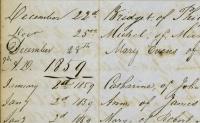
Located on the second floor of the Eastside Branch, the Makerspace is a collaborative workspace for making, learning, exploring, and sharing. Through the intersections of technology, science, art, and culture, the space encourages entrepreneurship, personal growth, and artistic expression.
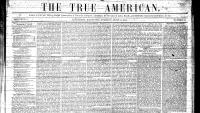
The True American was an anti-slavery newspaper started by Cassius Marcellus Clay in June 1845. He ran the paper in Lexington until August of 1845, when he published an article deemed so incendiary that a court injunction was issued against his printing, and his press shipped to Cincinnati. An advocate of the right to a free press, and his right of free speech, Clay continued printing the paper through 1847 in Cincinnati. The paper was distributed in Lexington. While focused on advancing the cause of emancipation, Clay also published poetry, agriculture, labor, and commercial news. There are also marriage and death notices from the surrounding area, some national.
Cassius Marcellus Clay was a fiery figure in Kentucky history. He often fought in duels and in street fights, generally in response to arguments against his emancipationist views. Later in life, he often had shootouts with the Madison County Sheriff at his home, Whitehall.
After the publication of his incendiary editorial (August 12, 1845, page 3 columns 1-4), he is said to have armed his printing shop with two brass cannons and myriad other weapons to fend off any attacks. The committee charged with removing his press did so while Clay was incapacitated with a fever, avoiding what surely would have been a deadly counterattack from Clay. In the March 18, 1846 paper, Clay addresses the attack, and continues his fiery rhetoric, finally offering a discount to non-slaveholders in slave states.
Clay is featured in an episode of the Library’s podcast "Tales from the Kentucky Room", which is linked below.
The Library only has a short run of The True American. It has been digitized from the microfilm, which can be accessed in the Kentucky Room. Several issues have significant mildew damage, so in some cases the OCR quality may be poor, though the print itself is still legible.
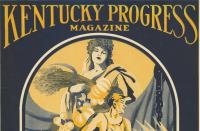
The Kentucky Progress Commission was formed in 1928 in order to draw tourism and business to Kentucky. It was formed by the Kentucky Legislature, and was a 12 person board. The “Kentucky Progress Magazine” was used by the board to promote Kentucky, and features local interest stories, photographs of people, places, and activities. It also features ads placed by various cities around the state.
Some issues contain material that is under copyright, but qualifies for display by libraries under Section 108(h) of US Copyright Law. It is the user's responsibility to determine the copyright status of the material they want to use. If a section is hidden, please contact us to view it.

St. Paul the Apostle Roman Catholic Church was formally created in the Covington Diocese in 1868, by Father John Bekkers. Still an active parish, the church has celebrated its 150th anniversary and is still in its original building in downtown Lexington.
Located on the fourth floor of the Central Library, this space invites children and students to learn about Science, Technology, Engineering, Arts, and Math through hands-on experiences. Programming events targeted toward upper elementary and middle-school aged students include circuits, robotics, augmented and virtual reality, coding, 3D printing, recording in the audio booth, and so much more.
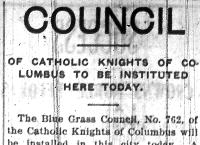
The Knights of Columbus is a fraternal Catholic service organization begun in the 1880s. In 1903, the local Bluegrass Council 762 became the third chapter in Kentucky, and it acquired its 4th degree status in 1920. One of the organization's earliest missions dealt with local unemployment before WWI and assisting with families in its parishes, and it also supported local veterans.
Information from Knights of Columbus, Kentucky State Council
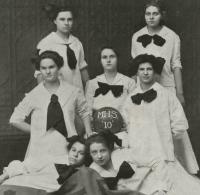
The Morton School Number 1, Lexington’s first public city school in 1834, was originally built on the corner of Walnut (later Martin Luther King Dr.) and Short Street. William Morton, who died in 1836, established a trust to be invested and used to maintain a free public school in Lexington, and the first public school was named in his honor. It became the Morton High School in 1904 and the Morton Junior High School in 1917. The school was relocated to Tates Creek Road as a middle school in 1938.
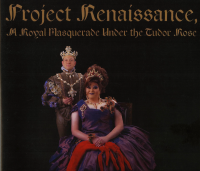

The United States Army Armor School began in 1940 as the Armored Force School and Replacement Center at Fort Knox, Kentucky. It spent a few years post World War II as inactive, until the 3rd Armored Division was reactivated in 1947, and became the US Army Training Center, Armor (USATCA), in 1956. Both Army and Marines soldiers received training on a variety of subjects and equipment.
Fort Knox hosted the school until it moved to Fort Benning, Georgia, in 2010, as the US Army Armor School. The yearbooks in the collection contain the names and photographs of the officers, NCOs, and graduates of the 8 week basic combat training at Fort Knox. There are also many photographs of the various buildings, training, and activities.

The Library's digitized collection includes some non-Fayette County directories for businesses, farms and residences.

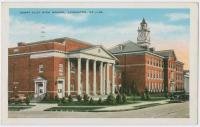
Lexington's school system dates back to the city charter of 1831, and it first school opened in 1834. From a single building in 1834 with about 100 students, today the Fayette County Public School system has over 40,000 students and 68 schools and programs. Lexington and Fayette County combined districts in 1968, shortly before the city/county government merger in 1974.
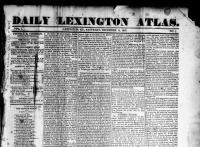
The Daily Lexington Atlas ran from December 11, 1847 through November 20, 1848 and was Lexington’s first daily paper, and the first to publish information from the telegraph lines. It was supportive of the Whig Party, which counted Henry Clay among its members. The Daily Lexington Atlas is described by William Perrin in his 1882 History of Fayette County Kentucky as a “red-hot Whig and fiery southern” publication.
Though short-lived, the paper covered many significant events including: the final year of the Mexican-American War, The Irish Rising of 1848, the debate surrounding emancipation of enslaved Kentuckians, the 1848 presidential election and the local election for Kentucky Governor. It also includes a few marriage and death notices from Lexington and surrounding counties. There are occasional notices of outbreaks of disease in other parts of the country, most commonly dysentery, which they called a “mysterious new disease.” They note an outbreak of cholera in Europe in October 1848; Lexington would see a second outbreak of cholera in 1849.
Perrin claims the paper had an extensive subscriber list, but had to “give up the ghost after several months disastrous experience” due to the expense of the paper. After his wife’s death on September 27, J.B. Cochran put his shares of the paper up for sale, and beginning in October, notices appear asking subscribers to pay on time.
This collection was digitized from microfilm by the University of Kentucky for Lexington Public Library. Toward the end of the run of the paper, there is significant bleed through on the pages, and in some cases the OCR (optical character recognition) quality is poor.
While the paper was considered a daily paper, it did not publish on Sundays. The library’s collection covers December 11, 1847 (first issue) through November 20, 1848, the final issue with J. B. Cochran as editor and proprietor. The paper continued through sometime in 1849 with N. L. Finnell as sole editor.
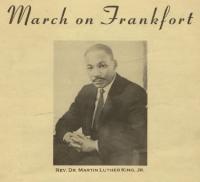
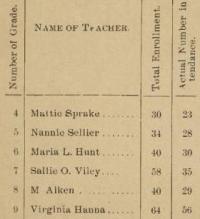
The city reports and ordinances for Lexington contain a wide variety of information about the people, infrastructure, and businesses.
The Lexington ordinances contain the laws and procedures for local government and departments, as well as local elections. The charter covers the incorporation of the city of Lexington.
The reports for the various city departments vary from year to year, but in general contain the mayor and city officers, and reports for the city clerk, auditor, treasurer, jailer, solicitor, attorney, assessor, license officer, health officer, city physician, fire and police departments, public works, parks, and sometimes special projects, like a temporary smallpox ward or the orphan home. Often the reports include specifics on city streets, and businesses with accounts with Lexington for goods and services.
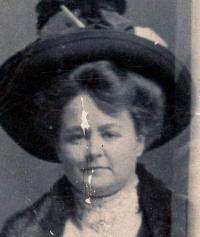
Tina Belle Green Winters Simpler Young (1880-1930), was born in Elmville, Kentucky. Known as Tiny, she was believed to be a sex worker in the 1920s and 30s, and sent $5.00 a week home to support her sister. For a time she worked in the Crawl section of Frankfort, then she moved to Lexington, and finally lived the rest of her life in Cincinnati. The queerness of sex work, a marginalized woman using sex to support family, provides context both to this collection bearing her name and to the LGBTQ+ community that has historically formed families on the sexual margins.
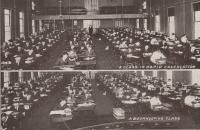
The collection contains non-Fayette County school yearbooks and images, dating from 1878-1968.
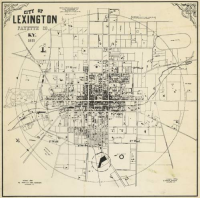
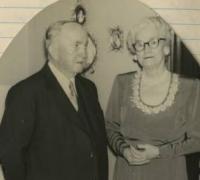

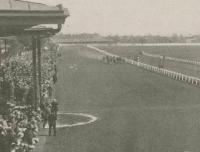
Fayette County's local businesses and organizations contain a wealth of information about local residents.
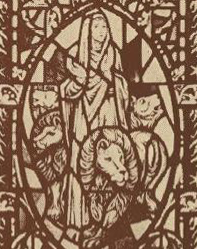
Fayette County churches contain some of the earliest records and information preserved about central Kentucky history. The digital archive contents include church ledgers, minutes, directories, and informational brochures.